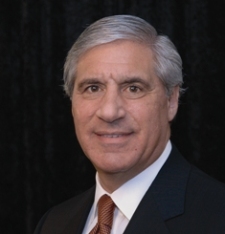Too few universities have embraced modern systems of accountability and transparency. Long-employed accounting structures in commercial businesses such as centralization, standardization, automation and integration are often counter-cultural in universities – and the opportunity cost can be substantial. But more importantly the transparency, controls and timeliness achieved through modern financial management systems can significantly improve decision-making.
When CEOs and CFOs try to employ modern systems of accountability and efficiency, they often are met with strong cultural objection from the academic side – the University of Michigan, University of Texas and Howard University are three recent public examples. As a result, universities pour money into the status quo – supporting the unsustainable business model discussed in the previous blog post. A transition has to occur, and will ultimately occur. The question is whether it will be a managed transition while there are still financial reserves to cushion the change, or a forced transition as financial reserves are depleted.
There is a sad misimpression among some academics that “if only the endowment were higher,” financial problems would be solved. Sure, a larger endowment can throw off more cash for operating support. But, to a very high degree, the endowment is restricted as to use and cannot be deployed for general needs which change regularly. Moreover, the annual draw on the average endowment is relatively low (about 5%) and thus usually covers only a small percentage of annual operating costs. So – although no one wants to give up hope, the endowment is not a realistic source of growth capital or inflation offsets.
Complicating higher ed financial management is the convoluted way tuition and fees are paid. The system of government and private loans is complex and is causing students and families to assume substantial obligations – even before they know if the student will have a degree to exploit in the future. And nearly half of the future obligations are for money that never went to the university – it was used for other purposes determined by the student. So, when you hear that student debt is high, please note that a large percentage of the borrowing was NOT for university charges but rather normal living expenses.
Finally, let me address the culture of non-accountably. Traditional higher ed is run like the federal government – employees spend the money and leaders must raise the money. Almost no university holds faculty accountable for revenue – or to manage a bottom line. Consequently, revenue stress is often seen as an administrative problem, and not shared by the academic community. So – the perceived issue is almost always not enough revenue. The problem is seldom seen as an unproductive and/or inefficient cost structure. Unfortunately, as mentioned in prior blog posts, the ability to raise prices indiscriminately is over. Sound financial management will require robust cost control and accountability. Managing to the bottom line must become a shared responsibility.
Our next blog topic will explore the issues of shared governance without shared responsibility.
Robert M. Tarola, CPA, CGMA
President
Right Advisory LLC
www.rightadvisory.com
Twitter: @rtarola

